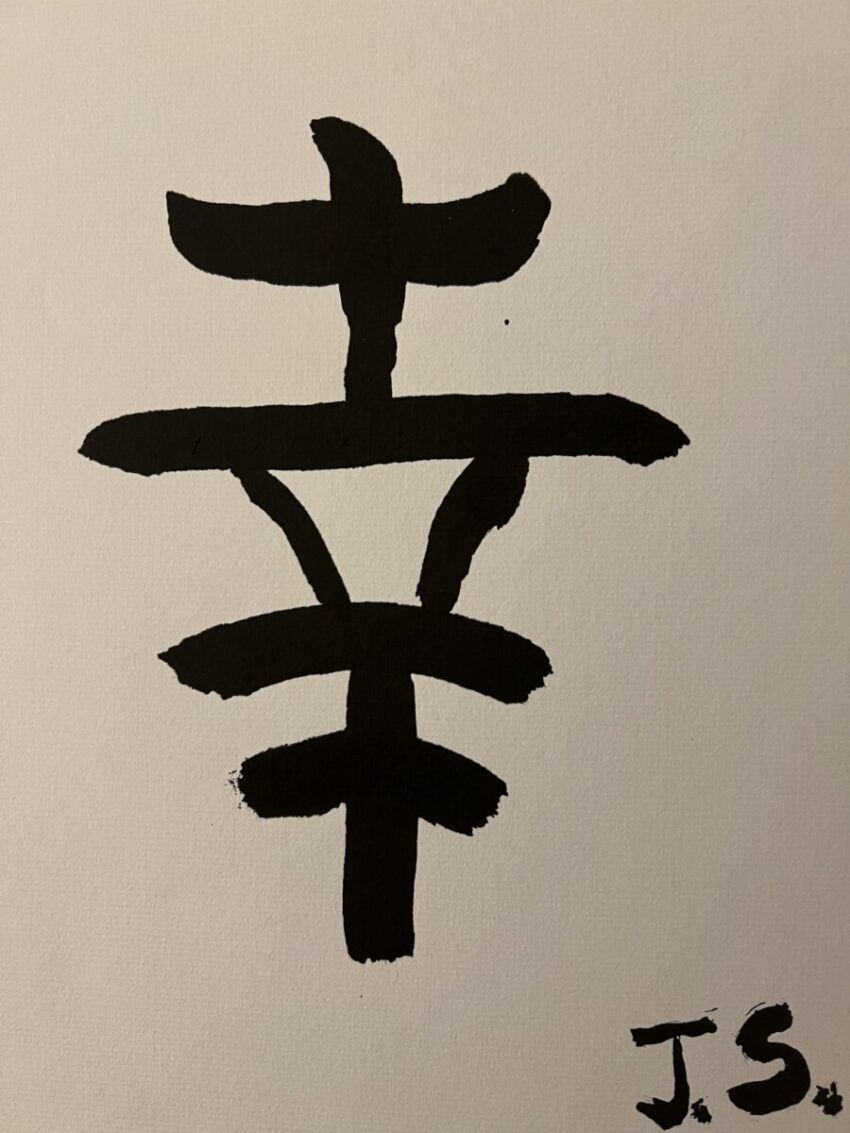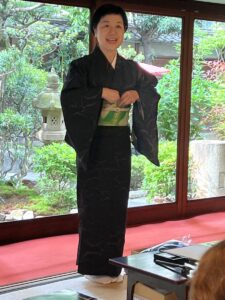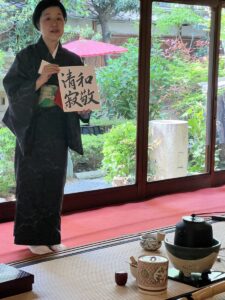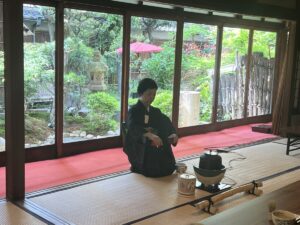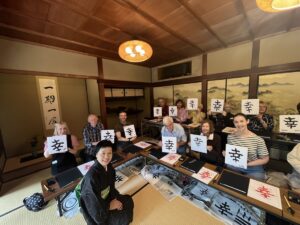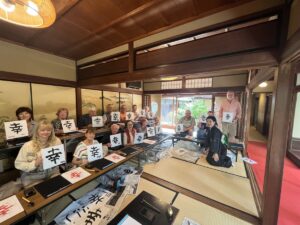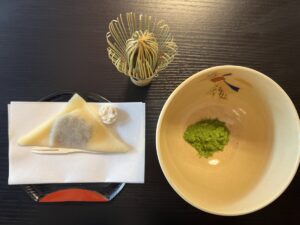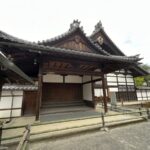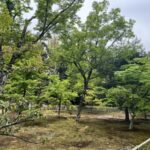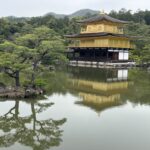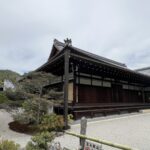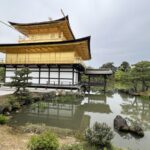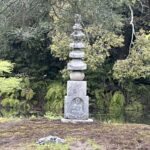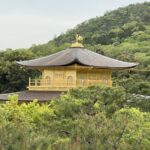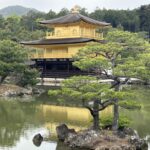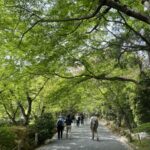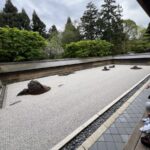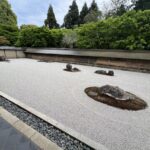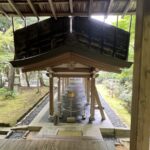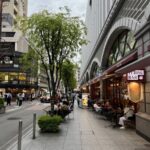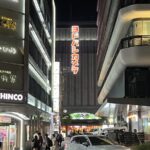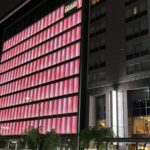Today we thankfully spent a lot of time on foot visiting temples and gardens. Our first stop however was to learn the traditional Japanese handicraft of calligraphy and enjoy the art of a tea ceremony accompanied by a Tea Master. The Japanese tea ceremony is a Japanese cultural activity involving the ceremonial preparation and presentation of matcha, powdered green tea, the procedure of which is called temae. As per Japanese culture we had to remove our shoes before entering the venue. We learnt to write “happiness” in Japanese. We all had our different versions of happiness!
Our next stop is the Kinkakuji Temple (Golden Pavilion) with it’s beautiful Japanese garden design. Kinkakuji (金閣寺, Golden Pavilion) is a Zen temple in northern Kyoto whose top two floors are completely covered in gold leaf. Formally known as Rokuonji, the temple was the retirement villa of the shogun Ashikaga Yoshimtsu, and according to his will it became a Zen temple of the Rinzai sect after his death in 1408. Kinkakuji was the inspiration for the similarly named Ginkakuji (Silver pavilion) built by Yoshimitsu’s grandson, Ashikaga Yoshimasa, on the other side of the city a few decades later.
Kinkakuji was built to echo the extravagant Kitayama culture that developed in the wealthy aristocratic circles of Kyoto during Yoshimitsu’s times. Each floor represents a different style of architecture.
The first floor is built in the Shinden style used for palace buildings during the Heian Period, and with its natural wood pillars and white plaster walls contrasts yet complements the gilded upper stories of the pavilion. Statues of the Shaka Buddha (historical Buddha) and Yoshimitsu are stored in the first floor. Although it is not possible to enter the pavilion, the statues can be viewed from across the pond if the sliding doors are open.
The second floor is built in the Bukke style used in samurai residences, and has its exterior completely covered in gold leaf. Inside is a seated Kannon Bodhisattva surrounded by statues of the Four Heavenly Kings; however, the statues are not shown to the public. Finally, the third and uppermost floor is built in the style of a Chinese Zen Hall, is gilded inside and out, and is capped with a golden phoenix.
And our last stop of the day is Ryoanji Temple. Originally a country house of the Tokudaiji Clan, it was acquired in 1450 by Hosokawa Katsumoto for use as a Zen training temple. It was destroyed by fire during the Onin war and was rebuilt in 1499. It was registered as a World Heritage Site in 1994.
The main attraction here was the Rock Garden. It measures only 25mtrs from east to west and 10mtrs from south to north. There are no trees; only 15 rocks and white gravel are used in the garden. The walls are made of clay boiled in oil. This rock garden was said to be created at the end of Muromachi Period (around 1500) by a highly respected Zen monk, Tokuho Zenketsu. The temple and its gardens are listed as one of the Historic Monuments of Ancient Kyoto, and as a UNESCO World Heritage Site.
And on our last night in Kyoto we headed to the busy modern shopping area for a look around! A city of contrasts with the modern and the old, the traditions and the current way of doing things. Very interesting.

